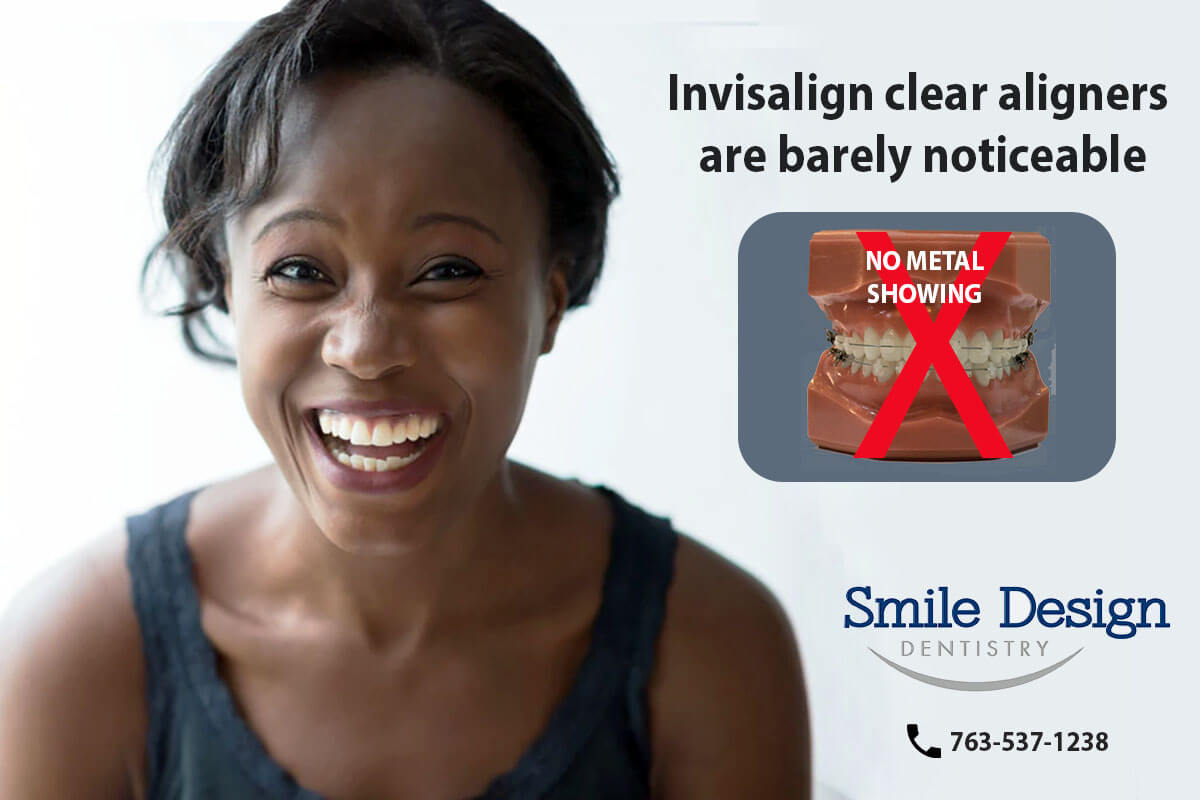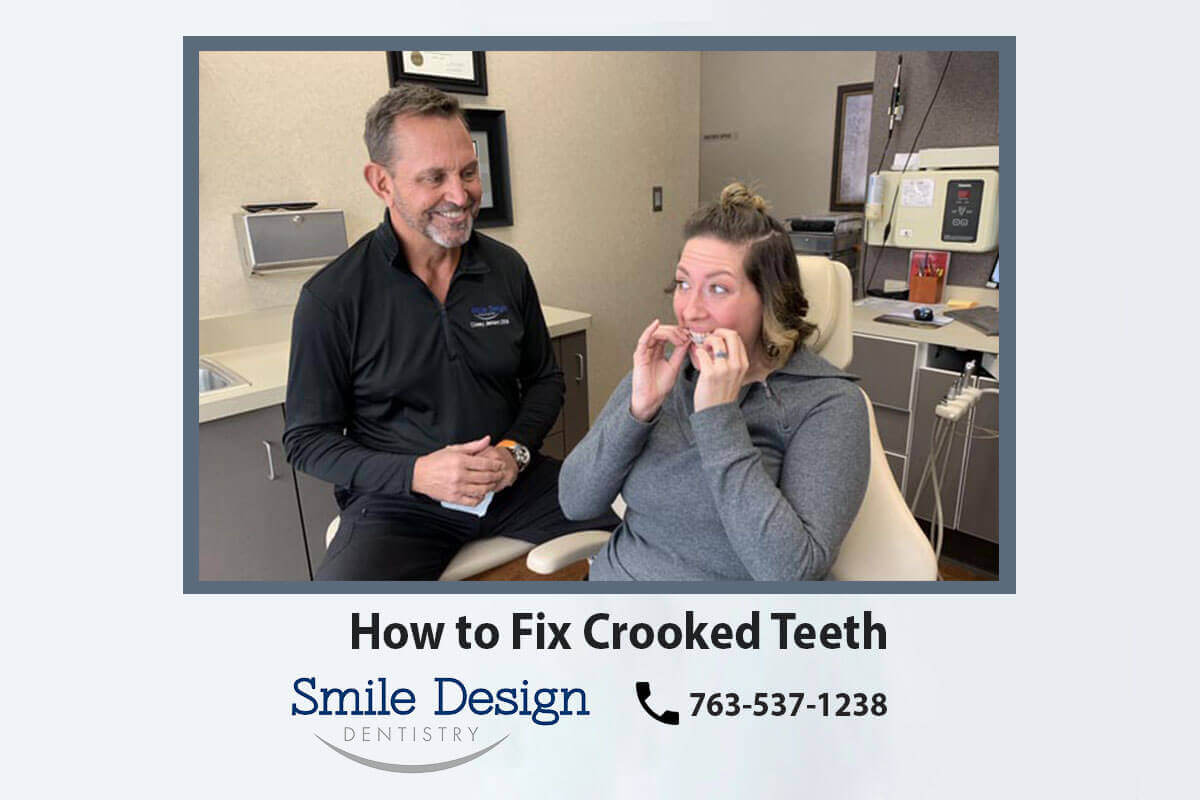
How to manage crooked teeth in this rapidly changing world of technology?
Crooked teeth have been a problem for man since the evolution of time and there are multiple problems associated with them. In today’s society most people would agree that straight teeth and enhanced smiles are more desirable than crooked teeth. Today we know that there at both health benefits to straight teeth as well as esthetic benefits. In our ever-changing world of dental technology we now have more options than ever to manage this problem.
What Causes Crooked Teeth?
Daniel Lieberman, an evolutionary biologist, describes in his book, The Story of the Human Body, how our hunter-gatherer ancestors did not have the crowding problems that we have today. They needed big, strong jaws to chew the more raw diets they had in that era. Over the course of time as our diets have become more refined our jaw has evolved to meet our different needs. Studying skulls found from different times in history we have determined that our jaws have become much small over the last million years.
The teeth no longer have enough space to fit in our smaller jaws. Looking back at skulls a million years ago it was very rare to see people with impacted wisdom teeth. Today, as the adult teeth attempt to erupt into position they are forced to rotate, become diverted or just get stuck in the jaw and cannot erupt.
However, thankfully, today you have better orthodontic options to meet the challenge. The good news is that you can rejuvenate your smile.
Other Causes of Crooked Teeth Include:
- Genetics
- Lack of dental care
- Trauma to the mouth
- Missing or extra teeth
- Habits like thumb sucking, mouth breathing and tongue thrust
What are the Challenges of Having Crooked Teeth?
In scientific terms, crooked teeth are known as a malocclusion. A malocclusion can result from many things including; rotated teeth, an overbite, an overjet, an underbite, a crossbite or an openbite. Each of these has potential to cause problems. If a person has a malocclusion and then adds to that a habit like tooth grinding or clenching the effects can be very destructive. The ultimate goal here would be to correct the malocclusion and then manage the damaging habits.
Let’s answer “what is a Malocclusions?”
A malocclusion is a misalignment or incorrect relation exists between the teeth of the two dental arches when they need to align correctly as the jaws close.
Common problems That often Accompany Malocclusions
This may include the familiar overbite or a “gummy smile” which may create the following issues:
- Difficulty with eating, chewing and swallowing our food
- Speech problems
- Airway problems are of great concern today. As our jaws have evolved to become smaller and smaller so have our airways. This, in addition to the increased weight people carry on their bodies today can create a lethal combination leading to sleep apnea. This reduced airflow causes reduced oxygen to the brain at night is a huge health concern today and is being heavily researched.
- Gum disease or periodontal disease
- Excessive wear and breakdown to the teeth
- Decay and loss of teeth
Another important consideration in today’s competitive world would be lower levels of self esteem associated with crooked teeth. A beautiful smile can play a significant role in developing a person’s self-confidence. With this often come better opportunities in life whether it is finding a mate, making friends or landing the big job. Advancing aligner technology has reduces former fears of dental problems adjusting to uncomfortable braces.
“Today more than ever in history a better smile often leads to a better life.” Meaning that commonly investments in smile design have a high pay off.
How do you Fix Crooked Teeth Today?
What options does the average dental patient have to gain straight teeth?
Malocclusions vary widely from very simple corrections to very complex.
We are fortunate to be living in an era with the many advances scientific research has brought to us. Today we have more options for care than any other time in history. Treatment for crooked teeth is faster, easier and more predictable than ever before.
Looking back through history we know that tooth movement was attempted thousands of years ago. Ancient Roman mummies have been found with gold wires wrapped throughout their teeth, which is believed to have been the earliest form of orthodontics. Current day orthodontics has a history dating back a few hundred years. Prior to dental bonding becoming available dentists would place wires or metal bands around each tooth in an attempt to move them to a more desired position. In the 1970’s scientists learned how to bond to teeth, which opened up what we currently know as “traditional orthodontics’ or bonded brackets. Each tooth has a specific bracket bonded to it in a specific place and then is moved with varying arch wires.
1. Wire or Metal Braces (more commonly used in the past)
The cosmetic deterrent of traditional braces has led researchers to search for other options. In the 1970’s Lingual Braces were created where the orthodontist would place the brackets on the back of teeth rather than the front. Esthetically this was more favorable but it was very difficult, very expensive and often very uncomfortable for the patient. Next came tooth colored brackets, both plastic and ceramic. These grew in popularity with patients because they were less visible but they came with their own set of complications.
In 1997 the world of straightening crooked teeth seemed to have changed forever. Two MBA students at Stanford University, Zia Chishti with a degree in economics and computer science and Kelsey Wirth, with a degree in literature and American history, who had no previous training in orthodontics, came up with the idea of moving teeth with plastic aligners. As we now enter the second decade of the 21st century it appears as though there will be no going back. Invisalign has become the “disruptor” in the world of orthodontics. Today over 7 million people have been treated with Invisalign to manage their malocclusions. The company is now investing millions of dollars into research while both general dentists and orthodontists are gaining confidence in this fairly new method of straightening teeth.
2. Invisalign Clear Braces

What we are finding is that consumers want straight teeth but they want it faster, easier, less expensive, more esthetic and less painful.So far, Invisalign seems to check off all of these requests. In many cases Invisalign can reduce the time in treatment by 6 months or more, as well as provide additional benefits when fixing crocked teeth. Patients can remove the aligners to eat and therefore are not restricted in their diet. The aligners are barely visible in conversation. Teeth can be kept cleaner and healthier by not having to try to brush and floss around the traditional brackets. In general patients report a lower level of discomfort while wearing aligners. And finally, the cost of treatment seems to be trending downward. Most dentists and orthodontists today charge the same or less for Invisalign compared to traditional orthodontics.
3. Composite bonding and Porcelain Veneers
Another way to manage crooked teeth esthetically would be with composite bonding or porcelain veneers. The advantage to this is it can be done faster, often in one or two visits. The disadvantage is that this form of correction is often more focused on esthetics and less with function. Very often the dentist must substantially cut down the teeth to create space for the new crowns or veneers.
Over the long term this can have negative effects on the health of the teeth ultimately leading to root canals or tooth loss. A more ideal treatment today would be to initially align teeth with Invisalign and then reduce the teeth minimally to place the esthetic porcelain or composite veneers. This approach generally is safer and more predictable for the patient’s long-term oral health.
How Prevalent is the Need to Resolve Crooked Teeth?
It is a common to see individuals from their teens to people who are in retirement wear braces. According to the Journal of Research in Dental Sciences, “Prevalence of crowding is 50.4% in boys and 51.4% in girls. Cross-bite was reported in 17.8% and 18.3% in boys and girls, respectively. Angles class I malocclusion was reported in 78.4% of boys and 80.2% of girls.”
The November 20, 2014 article explains how occurrences are higher in developing countries, but still the percentage of Minnesota residents who stand to benefit from new technology to straighten teeth is significantly high.
What does the Future Hold for Fixing Crooked Teeth?
There has never been a better time to fix crooked teeth and improve your smile than today.
With the majority of the worlds population having some level of crooked teeth and our growing awareness today of the problems associated with it we can easily predict that endless amounts of time and money will be spent on research in the future. Our knowledge in aligner therapy is still in its infancy but the exciting thing today is with big data and the new world of digital technology we are learning at a rate exponentially faster than ever before.
The new evolving treatment applications from Invisalign alone are transforming orthodontics at a rate never seen before in history. It is predictable that orthodontics will continue to get faster, easier, cheaper and more accessible than ever before. The previous barriers that have prevented people from having straight teeth continue to be taken down.
Invisalign clear aligners are ideal for both young and aging individuals who want to improve their smile. The future is difficult to predict but it is very exciting to think about what will be available next to improve your smile design.
Conclusion
At Smile Design Dentistry, you gain a orthodontist creating your treatment plan who had additional training above and beyond general dental school. Invisalign is one of the most popular solutions used to treat crooked teeth; we can best assess your needs in person. Read more about Corey Jensen DDS, a patient-focused dentist with multiple honors and award from his peers.
Schedule a consultation with the dentists at Smile Design Dentistry today: 763-537-1238
 Dr. Corey Jensen is a lead dentist at Smile Design Dentistry in Plymouth, Minnesota. Dr. Jensen has accumulated over 2400 additional hours of advanced education in his continued pursuit of excellence. He has received the highest distinction of “Master” in the Academy of General Dentistry and has been repeatedly recognized by his peers as a “Hall of Fame -Top Dentist” in the Mpls/St.Paul magazine.
Dr. Corey Jensen is a lead dentist at Smile Design Dentistry in Plymouth, Minnesota. Dr. Jensen has accumulated over 2400 additional hours of advanced education in his continued pursuit of excellence. He has received the highest distinction of “Master” in the Academy of General Dentistry and has been repeatedly recognized by his peers as a “Hall of Fame -Top Dentist” in the Mpls/St.Paul magazine.

